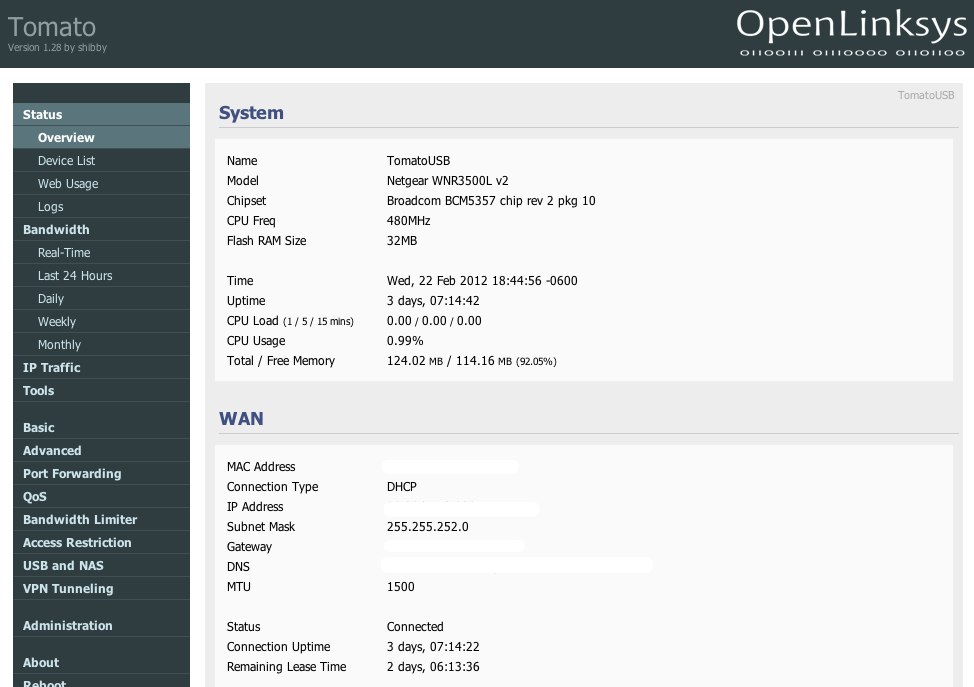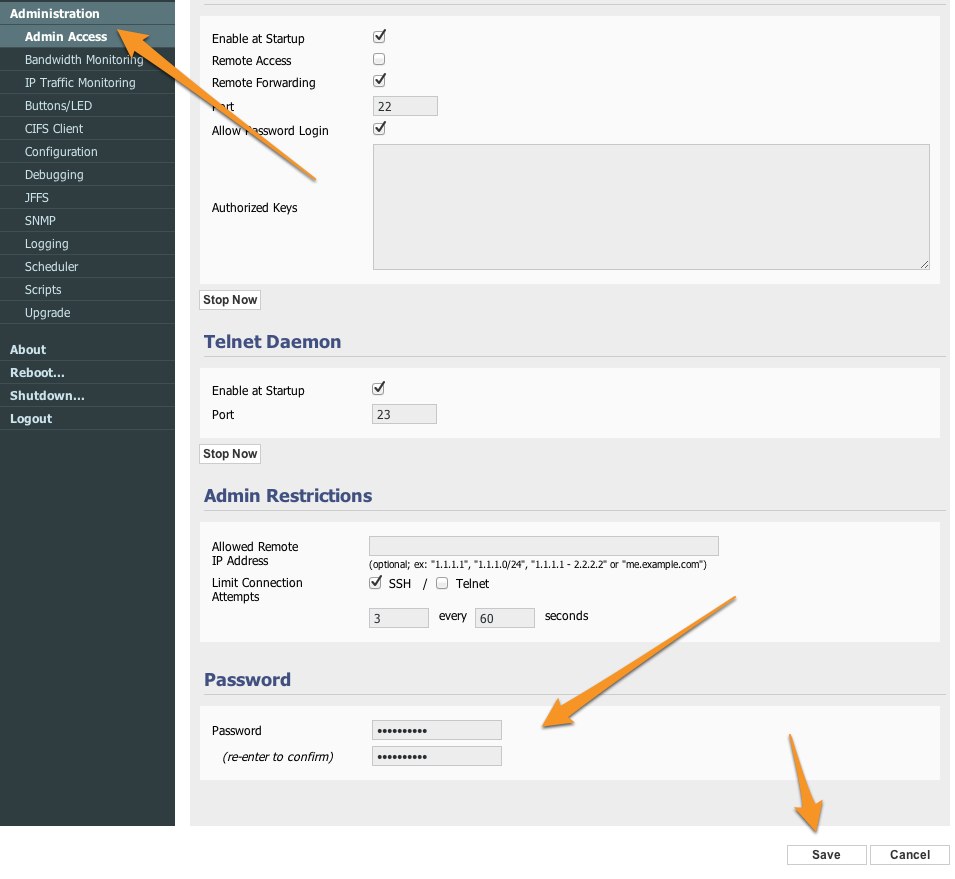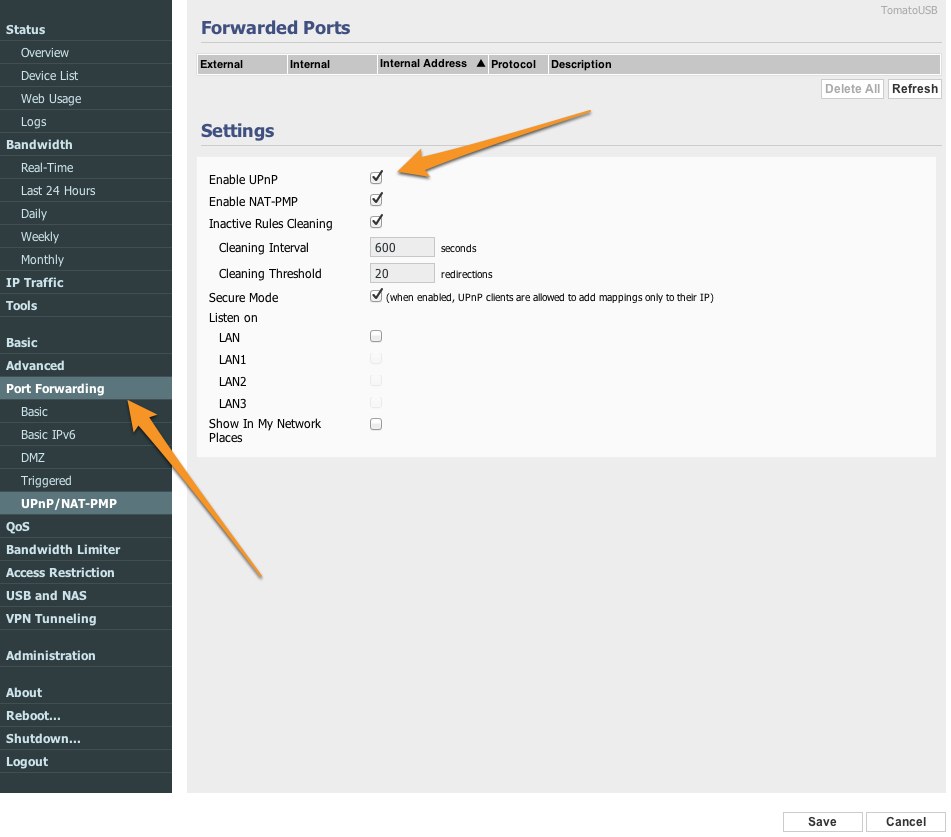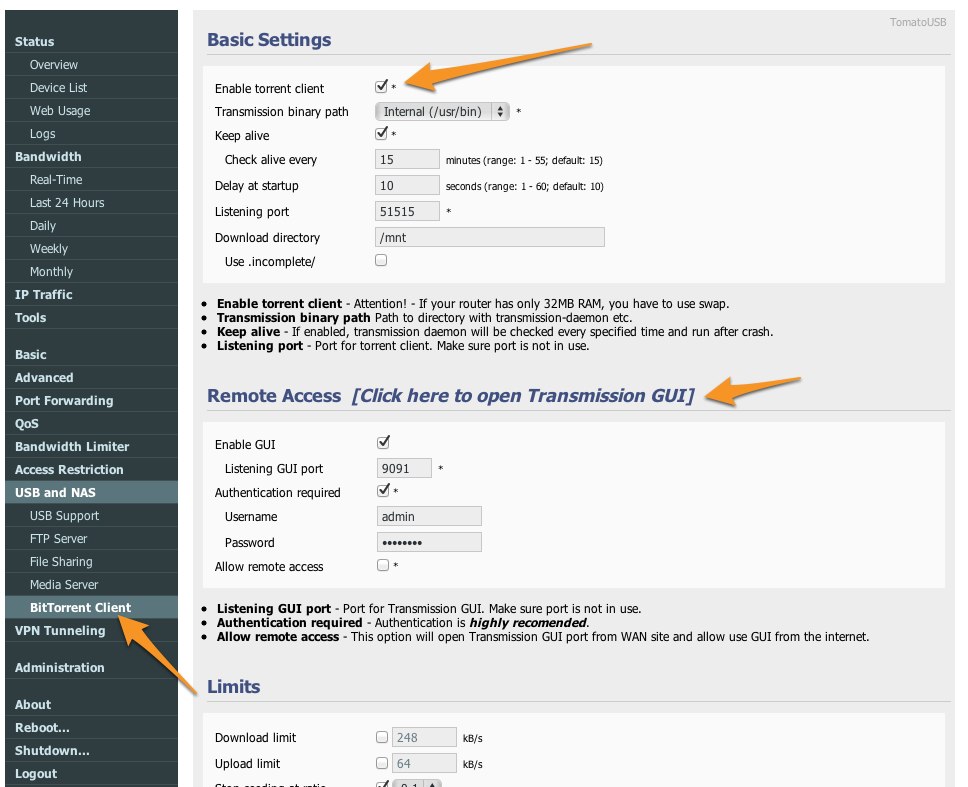For those who have their hands on the newest of NETGEAR's open platform routers, the WNR3500Lv2, you're in for a treat--Tomato firmware guru Shibby has already put together a full-featured build to enjoy, that expands upon builds already available for the original WNR3500L.

Shibby has made this firmware extremely easy to install and get running on your WNR3500Lv2, without needing any terminal or advanced knowledge at all. Here's how to get started.
Note: This firmware is for the v2, not the original version of the WNR3500L. You can refer to the box or unit itself to check which version you have.
Wait. Should I upgrade to Tomato on my WNR3500Lv2?
Well, that depends, of course! Generally speaking, custom firmware can do a lot of things for your router--even though the stock firmware is designed to be perfectly functional as is. Here are some benefits of upgrading to 3rd party firmwares (in general)
- Faster speeds and leaner code, improving your router's performance
- Lots more settings and tweaks, enabling more detailed customization
- More frequent, cutting-edge updates from the firmware authors
- Additional features, such as OpenVPN, Bittorrent clients, and more
In the case of Shibby's Tomato firmware, some notable benefits are real-time bandwidth monitoring of LAN clients, the Transmission Bittorrent client built in, 3G modem support, and more.
Assuming that all sounds good, and you're ready to dig a little deeper into what your router can do, read on.
Step #1: Log Into Your WNR3500Lv2
After you have your WNR3500Lv2 connected, log into the router GUI via http://192.168.1.1 in your favorite browser, and enter your username and password. ("Admin" and "password" are the usual defaults for NETGEAR firmware, if you just received it.)
Step #2: Download the Tomato by Shibby Firmware for WNR3500Lv2
Of course, you'll have to download the firmware in order to be able to upload it to your router from your local machine.
Step #3: Upgrade the Firmware
This doesn't get any easier! All you have to do is head to the advanced settings/upgrade firmware section, choose the file you downloaded (it will have a .CHK extension, which is the standard file type for NETGEAR router firmware upgrades) and update it.
You'll see a prompt asking you if you want to continue, as the version number "is the same" as what is installed. Simply accept and continue. The router will update the firmware and reboot. At this point, you'll need to reconnect to the router--standard Tomato login information applies, "root" and "admin" for the respective username and password fields.
Note: It's generally recommended that you also erase the NVRAM completely to ensure a clean installation of the firmware. This can be done through the menus: Administration -> Configuration -> Restore Default Configuration -> Erase all data in NVRAM. A 30-30-30 reset can also be performed.
Step #4: How to Configure Tomato on your WNR3500Lv2
Well, you're pretty much ready to go--now for a short tutorial on some of the key settings you should adjust as well as some cool features of this new firmware.

First, as with any new firmware installation, you should always edit and update your admin password, which you use to log into the router's GUI. Remember that once you change this, you'll have to log in again.

Next, you should update your basic settings. The most important things to consider here are any custom DNS server settings you'd like to apply (I prefer OpenDNS) as well as your wireless access point settings. Make sure to pick a strong form of encryption such as WPA or WPA2.

Here is the screen for uPnP--also known as Universal Plug and Play--which you should enable if you have other network devices in your home that may need it. Some examples would be media streamers or NAS devices.

Finally, I noticed some speed issues with my mobile phone when connecting to the router. I was baffled as to why, since every other client both wired and wireless seemed fine. In the advanced wireless settings, I enabled "Afterburner" and it worked like a charm. I am not sure why this worked, or what exactly the feature does, but it may be a handy tip for you if you have the same problem. (I probably wouldn't mess with the rest of these settings unless you're a pro or know what exactly they do.)
Step #5: Explore Additional Features
Of course, there's some pretty cool stuff in here that you don't have to use, but that can come in extremely handy if you need it.

First, there's a real-time bandwidth monitor which you can use to track your bandwidth usage, of course, in real-time. You can also see your usage broken down by day, week, or month--especially useful if you're on a capped bandwidth plan.

In addition to USB storage and media server capability, you can also use a built-in Bittorrent app, Transmission, to directly download torrents. There is even a built-in GUI, making it very easy to upload the torrent files you want to the router. The only tricky bit is configuring the download location--it's much easier if you have a USB connected drive.
Step #6: Discuss In Our Forums... and Thank Shibby!
If you have any questions about this firmware, want to talk about your favorite feature, share issues or bugs, or just give some thanks to the author of the firmware, hit up the Tomato section on our forums.


Had to use the hard reset after restarting after changing IP to match my LAN, because after saving changes the login was no longer admin/admin. So changing that first thing is not only necessary for security, but because if you don't change it to something you know, looks like Tomato changes it to something you don't, by default.
One odd thing is my HTC Android phone couldn't see the SSID with Wireless Access Mode = auto. Changed that to G Only, which is fortunately is appropriate in my current environment, and the phone picked it right up. Is there something else to tweak to get the SSID seen by an Android phone?
Other than that, looks good. Signal is better than the old Linksys WRT54G (stock software).
Hallo can i do a upgrade from tomato to dd-wrt without resetting the router to facotry firmware ?
You should be able to just rename the file to the correct extension for DD-WRT and flash it through the GUI -- I've done that many times.
Just make sure you have a USB-TTL cable on hand in case things go awry; that way you can easily recover from a bad flash.
ok i try thanks, i just ha to get this cabel and im off :)
just to summen up,, i have recived the netgear wnr3500l v2, and was sure that i had to use dd-wrt to make my pptp vpn to giganews work, i just went on, and tryed the tomato pptp client and i work very well, so i have not tryed to implementet the dd-wrt afterall tomato did it for me.. :) Thanks for assistens here.
sorry if i spelled something wrong im not u.s. native :)
I'm just curious. Why would you want a /8 (16777214 hosts) on this?
I'm just curious. Why would you want a /8 (16777214 hosts) on this?
Does this firmware support an exFAT HDD connected through the USB port?
Hello,
I tried to install Tomato on my 3500v2 but it doesn't work.
I open the web GUI et delect the page to upload a firmaware
I select the firmware and press "charger"
A pop-up says me "Continuer ? Toutes les connexions internet existantes seront interrompues"
I click "OK"
The GUI's main frame displays the not found web page
I press F5 and GUI is reload but the Tomato installation doesn't run !
How can I do ??
Actual firmware : V1.2.0.20_40.0.68
Thanks
I try with Opera browser instead of IE.
When I try to upload the new firmware I got this message :
Firmware upgrade failed. Please verify your file.
I have downloaded the file for my wnr3500L-v2 and tried to update the firmware. After pushing the upload button to upload the file to the router I get a message "please assign correct file. The file format is *.chk" What am I doing wrong?
EC
AW
[email protected]
PD
[email protected]
LU
[email protected]
What's the procedure for going back to stock firmware?
I was about to pitch my Netgear NR3500LV2 router because I was only getting download speeds of .5 Mbs, whereas I have 100 Mbs service. (Yes I installed the latest firmware upgrade from Netgear). Since the router was useless, I decided to install Tomato in order to familiarize myself with the interface.
I installed the basic package, but my WNR3000LV2 bricked. After I did a 30-30-30, the Tomato login magically appeared and all is well. I then reinstalled using the AIO package.
Now I am getting 40 Mb download speed.
One happy camper again!
Pages